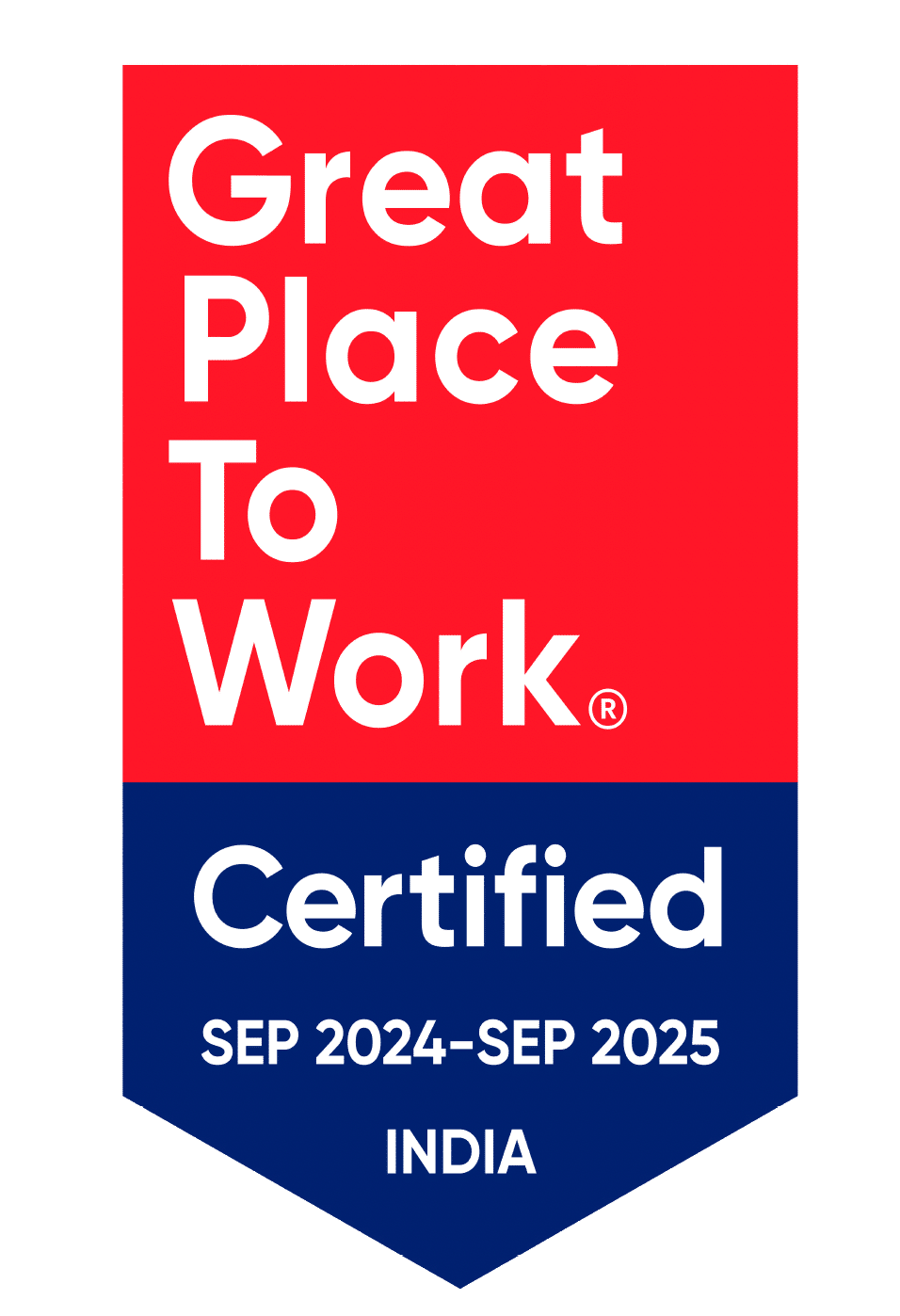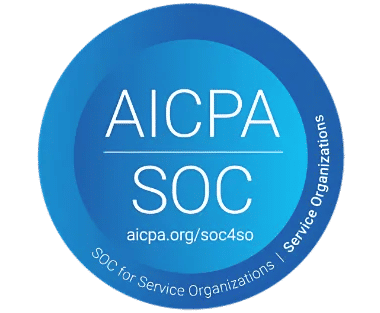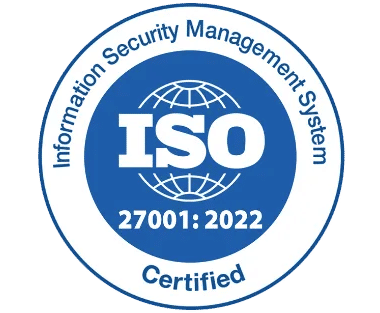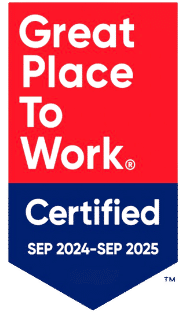Why Employee Directory Intranets Are More Than Just Contact Lists

At first glance, an employee directory might seem like a simple contact list but it’s a powerful tool that drives collaboration, enhances workplace connectivity, and streamlines internal communication.
Modern employee directory intranets go beyond just listing names and phone numbers; they provide detailed employee profiles, organizational charts, skill directories, and real-time availability, making it easier for teams to connect, share knowledge, and work efficiently.
Why You Need an Employee Directory for Your Intranet
An employee directory is a crucial component of any modern intranet, providing a centralized hub for employee information, streamlining communication, and fostering collaboration across teams. Here’s why your intranet needs one
1. Improves Internal Communication – A searchable directory makes it easy to find and contact colleagues, reducing time wasted searching for email addresses or phone numbers.
2. Enhances Collaboration – Employees can quickly locate team members with specific skills or expertise, enabling faster project coordination and knowledge sharing.
3. Boosts Productivity – With a well-structured directory, employees can instantly access job titles, departments, locations, and reporting structures, reducing communication bottlenecks.
4. Supports Remote and Hybrid Work – A cloud-based directory ensures employees—whether in-office or remote—can stay connected, access real-time availability, and collaborate effortlessly.
5. Simplifies Onboarding – New hires can easily familiarize themselves with colleagues, teams, and the company structure, accelerating their integration into the organization.
6. Provides Organizational Transparency – By displaying an org chart and reporting lines, employees better understand roles, responsibilities, and company hierarchy.
7. Integrates with Workplace Tools – Many directories connect with HR systems, collaboration platforms (Teams), and calendars, making them a seamless part of daily workflows.
An employee directory transforms your intranet into a dynamic and connected workplace, ensuring that employees can communicate effectively, collaborate efficiently, and stay engaged in their roles.
Employee Directory vs. Employee Profile: What’s the Difference?
When managing an organization’s workforce, two essential tools often come up: the Employee Directory and the Employee Profile. While both help employees connect and collaborate, they serve different purposes. Understanding these distinctions can improve communication, teamwork, and overall workplace efficiency.
What Is an Employee Directory?
An Employee Directory is a centralized list of all employees in an organization and unlike a simple contact list, an employee directory is dynamic, integrating with HR systems and collaboration tools to keep employee data up to date and easily accessible.
Full Name
Job Title and Department
Work Email and Phone Number
Office Location
Reporting Manager and Team Member
The primary function of an employee directory is to enable quick access to contact information. It acts as an internal phonebook, making it easy for employees to find and communicate with colleagues, whether within the same department or across different locations.
What Is an Employee Profile?
An Employee Profile is a more detailed representation of an individual within the organization. Unlike a directory entry, an employee profile offers a comprehensive view of an employee’s role, skills, and contributions. It typically includes:
Personalized Bio with work history and expertise
Profile Picture
Projects and Achievements
Work Schedule and Availability
Links to Internal Collaboration Platforms (such as LinkedIn or company forums)
Employee profiles are more personalized and dynamic than a simple directory entry. They allow employees to showcase their expertise, highlight accomplishments, and connect based on skills and interests rather than just job titles.
Key Differences Between Employee Directory and Employee Profile
While an employee directory is primarily used for quick lookups and contact details, an employee profile provides a richer and more detailed view of an individual’s professional background. The directory focuses on making communication seamless, while profiles help foster collaboration by showcasing an employee’s experience, skills, and contributions.
Why Are Both Important?
A well-structured employee directory ensures that employees can find and connect with colleagues efficiently, while detailed employee profiles promote stronger collaboration, knowledge-sharing, and employee engagement. By integrating both, organizations create a more transparent and connected workplace where employees can easily reach out for assistance, mentorship, or project collaboration.
Benefits of an Intranet Employee Directory
An intranet employee directory is more than just a digital contact list—it is a powerful tool that enhances communication, collaboration, and efficiency across an organization. By centralizing employee information in one easily accessible platform, businesses can streamline workflows, improve internal networking, and foster a more connected workplace. Here are the key benefits of having an employee directory within an intranet:
1. Enhances Internal Communication
One of the biggest advantages of an intranet employee directory is that it simplifies communication across teams, departments, and locations. Employees can quickly find and contact colleagues using:
Searchable name, department, or job role filters
Click-to-call or email functionality
Integrated messaging and collaboration tools
This eliminates the need to track down phone numbers or email addresses manually, reducing delays in communication and improving response times.
2. Boosts Collaboration Across Teams
A well-structured employee directory enables cross-departmental collaboration by allowing employees to:
Identify subject matter experts for specific projects
Find colleagues with similar skills or experiences
Connect with remote or hybrid team members easily
For organizations with distributed teams, an intranet employee directory ensures that employees are not isolated and can build professional relationships regardless of their location.
3. Saves Time and Increases Productivity
Without an employee directory, finding the right person for a task or question can be time-consuming. An intranet-based directory automates this process, allowing employees to:
Look up organizational hierarchies to identify reporting structures
Access real-time availability of employees
Avoid unnecessary back-and-forth emails or messages
By reducing the time spent searching for information, employees can focus more on their work, boosting overall productivity.
4. Strengthens Workplace Transparency
An open and well-maintained directory fosters transparency by providing clear visibility into an organization’s structure. Employees can see:
Who reports to whom
How departments are structured
Key contacts for different teams or initiatives
This helps new hires quickly understand company dynamics, making onboarding smoother and improving overall workplace culture.
5. Improves Employee Recognition and Engagement
An intranet employee directory is more than just names and titles—it can include detailed profiles showcasing employee achievements, skills, and contributions. This can:
Highlight top performers and team contributions
Encourage peer-to-peer recognition
Foster a culture of engagement and appreciation
When employees feel visible and valued, they are more likely to stay engaged, motivated, and committed to their roles.
6. Supports Remote and Hybrid Workforces
With remote and hybrid work becoming the norm, an intranet-based employee directory is essential for:
Keeping remote employees connected with their teams
Providing quick access to contact details without relying on outdated spreadsheets
Ensuring employees can find and communicate with colleagues regardless of location or time zone
This strengthens teamwork, prevents silos, and ensures remote employees remain an integral part of the organization.
7. Facilitates Better HR and IT Support
HR and IT teams can use the intranet employee directory to:
Manage employee records efficiently
Ensure up-to-date contact details for security and compliance purposes
Support IT troubleshooting by easily identifying user roles and system access levels
A well-maintained directory reduces errors, simplifies administrative tasks, and enhances organizational efficiency.
8. Enhances Security and Compliance
Unlike external or manually maintained directories, an intranet employee directory offers secure, role-based access to sensitive information. Organizations can:
Restrict visibility based on user roles and permissions
Ensure data privacy compliance (e.g., GCC, SOC2)
Keep information updated and synchronized with HR systems
This minimizes security risks while ensuring employees have access to the right information at the right time.
Key Features of an Effective Employee Directory Intranet
An employee directory intranet is a powerful tool that enables employees to connect, collaborate, and communicate efficiently. However, not all directories are created equal. To truly enhance workplace productivity and engagement, an effective employee directory should include key features that ensure easy access, accuracy, and usability. Below are the essential features that make an intranet-based employee directory truly effective:
1. Advanced Search and Filters
A robust employee directory should allow users to quickly find colleagues through an intuitive search and filtering system. Employees should be able to search by:
Name, job title, or department
Location or office branch
Expertise or skills
Reporting manager or team members
The faster employees can find the right person, the more productive and efficient workplace communication becomes.
2. Rich Employee Profiles
A modern employee directory goes beyond just listing names and contact details. Comprehensive employee profiles should include:
Full name and job title
Department and reporting structure
Work email and phone number
Profile picture for recognition
Work history, skills, and expertise
Current projects or responsibilities
Social and collaboration links (Teams)
Rich profiles help employees understand each other’s roles and expertise, fostering better collaboration and team synergy.
3. Organizational Chart Integration
A visual organizational chart helps employees navigate the company structure by showing:
Reporting relationships and hierarchy
Departments and team structures
Managerial and executive leadership
This feature is particularly useful for new employees during onboarding, enabling them to understand who does what within the organization.
4. Real-Time Availability and Status Updates
An effective employee directory should display real-time availability, helping employees know if someone is:
Online or offline
On leave or in a meeting
Working remotely or at the office
This feature reduces delays in communication and ensures employees can connect at the right time
5. Seamless Integration with Communication Tools
To enhance usability, an employee directory should integrate with communication and collaboration tools, such as:
Microsoft Teams, Slack, or Zoom for instant messaging and video calls
Email clients for quick email access
Calendar systems to check availability for meetings
This ensures that employees can reach out with just a single click, improving workflow efficiency.
6. Mobile-Friendly Access
With remote and hybrid work becoming common, an effective employee directory should be:
Optimized for mobile devices
Accessible via an intranet app
User-friendly across different screen sizes
A mobile-responsive directory empowers employees to stay connected, no matter where they are working from.
6. Mobile-Friendly Access
With remote and hybrid work becoming common, an effective employee directory should be:
Optimized for mobile devices
Accessible via an intranet app
User-friendly across different screen sizes
A mobile-responsive directory empowers employees to stay connected, no matter where they are working from.
7. Employee Self-Service for Profile Updates
To keep directory information accurate and up to date, employees should have self-service access to:
Update their contact details
Modify their skills and expertise
Add achievements or certifications
Allowing employees to update their own profiles ensures data accuracy and reduces the burden on HR or IT teams.
8. Secure Role-Based Access Control
To protect sensitive information, the directory should have role-based access controls that:
Limit visibility of certain employee details (e.g., only HR can access salary information)
Restrict who can edit or modify directory data
Ensure compliance with data protection regulations (GDPR, HIPAA, etc.)
This ensures the directory remains secure, compliant, and well-maintained.
9. Customizable and Scalable Design
Every organization has unique needs, so an effective directory should be:
Customizable (fields, layout, permissions)
Scalable to grow with the company
Configurable for multi-location or global teams
A flexible design ensures that the directory remains relevant and useful as the company expands.
10. Analytics and Reporting Features
An advanced directory should include usage analytics to track:
Most searched job roles or skills
Employee engagement with the directory
How frequently certain contacts are accessed
These insights help HR and management improve internal networking and optimize workforce utilization.
Best Practices for Using an Employee Directory in Your Intranet
An employee directory is a powerful tool within an intranet, helping organizations streamline communication, improve collaboration, and enhance workplace transparency. However, to fully leverage its benefits, organizations need to ensure it is well-maintained, easy to use, and aligned with business needs. Here are the best practices for effectively using an employee directory in your intranet.
1. Keep Employee Information Accurate and Up to Date
An employee directory is only as valuable as the accuracy of its data. Outdated or incorrect information can lead to communication inefficiencies and confusion. To maintain accuracy:
Implement an automated sync with HR and IT systems to update employee details in real-time.
Allow employees to edit their own profiles with approval from HR or managers.
Conduct regular audits (quarterly or biannually) to ensure the directory reflects current job roles, contact details, and reporting structures.
A directory with up-to-date information ensures that employees can always reach the right person when needed.
2. Optimize Search and Filtering Capabilities
A directory should be quick and easy to use, allowing employees to find the right contact without hassle. To enhance usability:
Enable advanced search filters (by name, department, job title, location, skills, etc.).
Include autocomplete and keyword suggestions to speed up searches.
Organize directory listings in a logical structure to make browsing intuitive.
A well-designed search function saves time and improves overall productivity.
3. Enrich Employee Profiles for Better Collaboration
A basic directory with just names and contact details limits its usefulness. Detailed employee profiles can enhance internal networking and collaboration. To maximize value, profiles should include:
Professional skills and expertise (helpful for cross-functional projects).
Work experience and current projects to showcase contributions.
Profile pictures for better recognition and engagement.
Social or internal collaboration links (e.g.,Teams).
Encouraging employees to complete their profiles fosters a more connected and informed workplace.
4. Integrate with Communication and Collaboration Tools
To make the directory more functional, seamless integration with existing workplace tools is essential. The directory should allow employees to:
Click-to-call, email, or message colleagues directly from their profiles.
Connect with team members on Microsoft Teams, or internal chat tools.
View availability status to know if someone is online, in a meeting, or on leave.
This reduces friction in workplace communication and ensures employees can collaborate instantly.
5. Provide Mobile Access for Remote and Hybrid Employees
In today’s flexible work environment, employees need on-the-go access to the directory. Ensure that:
The directory is mobile-friendly with a responsive design.
It is accessible through the company’s intranet app or a dedicated mobile interface.
Employees can update their information and search for colleagues from any device.
Mobile access is especially crucial for remote teams and field employees who may not always be at their desks.
6. Maintain a Clear and Intuitive User Interface (UI)
A cluttered or confusing directory can discourage employees from using it. Best practices for UI design include:
A clean layout with easy-to-read employee details.
Categorization of employees by departments and teams.
Quick access buttons for common actions like calling or messaging.
A well-designed user experience ensures the directory remains a valuable and frequently used resource.
7. Implement Role-Based Access Control (RBAC) for Security
Not all information should be visible to everyone. To protect privacy and sensitive data:
Define role-based permissions (e.g., only HR can view salary or personal information).
Restrict access to certain departments, job roles, or management levels.
Ensure compliance with data protection laws (e.g., GDPR, HIPAA).
Balancing transparency with security ensures that employees get the information they need without compromising confidentiality.
8. Encourage Employee Engagement and Usage
An employee directory is only effective if employees actually use it. To drive adoption:
Introduce it during onboarding so new hires know how to find colleagues.
Encourage employees to complete and personalize their profiles.
Use gamification (e.g., profile completion badges) to boost engagement.
Collect employee feedback and make improvements based on user needs.
A well-promoted directory enhances engagement and ensures employees recognize its value.
9. Keep It Scalable and Future-Proof
As the company grows, the directory should scale seamlessly to accommodate new employees and evolving organizational structures. Consider:
Cloud-based solutions that allow for easy expansion.
Multi-location support for global teams.
Customization options to adapt to changing business needs.
A scalable directory ensures long-term usability and adapts to the organization’s evolving structure.
Profile completion rates (to ensure employees are keeping their information updated).
Using these insights, organizations can refine the directory to better serve employee needs.
Profile completion rates (to ensure employees are keeping their information updated).
Using these insights, organizations can refine the directory to better serve employee needs.
How to Create an Employee Directory with Employee Directory 365?
Creating an employee directory doesn’t have to be complicated. With Employee Directory 365, you can build a feature-rich directory seamlessly. Here’s how:
- Import Employee Data: Sync with your HR or Active Directory system for quick setup.
- Customize Profiles: Allow employees to personalize their profiles with skills, interests, and project details.
- Enable Search and Filters: Use AI-powered search capabilities to locate employees by department, expertise, or location.
- Integrate with Collaboration Tools: Connect with Microsoft Teams, Outlook, and Slack for streamlined communication.
- Maintain Security and Compliance: Ensure access controls and privacy settings align with company policies.
- Deploy on Your Intranet: Easily embed the directory within your existing intranet for seamless navigation.
Conclusion
An employee directory intranet is far more than just a list of names and contact details—it’s a powerful tool that enhances communication, collaboration, and overall workplace efficiency. By implementing best practices and leveraging solutions like Employee Directory 365, organizations can create a dynamic and engaging employee directory that drives productivity and strengthens company culture.
Frequently Asked Questions
1. What is an Employee Directory Intranet?
An Employee Directory Intranet is a centralized digital directory within a company’s intranet that helps employees find and connect with colleagues. It includes contact details, job titles, departments, locations, skills, and reporting structures, improving workplace communication and collaboration.
2. Why is an Employee Directory important for businesses?
An Employee Directory is essential because it:
Enhances internal communication and collaboration.
Provides quick access to employee contact information.
Helps new hires familiarize themselves with the organization.
Supports cross-functional teamwork by allowing employees to find colleagues with specific skills.
Streamlines organizational structure visibility through org charts.
3. What features should an Employee Directory Intranet have?
A robust Employee Directory should include:
Advanced search & filters (by name, department, skills, location).
Detailed employee profiles (contact info, job roles, skills, reporting structure).
Organizational chart for better visibility of hierarchy.
Integration with communication tools (Teams, Slack, Zoom, etc.).
Mobile access for remote and hybrid employees.
Security & access control to protect sensitive data.
4. Can an Employee Directory help in remote and hybrid work environments?
Yes! A cloud-based employee directory is crucial for remote and hybrid teams because it:
Enables employees to find and connect with colleagues across locations.
Provides real-time availability and status updates.
Integrates with chat and video conferencing tools for instant communication.
Improves collaboration across distributed teams by making expertise easily searchable.
5. How do companies keep Employee Directory information up to date?
To maintain accuracy, organizations can:
Sync the directory with HR and IT systems for automatic updates.
Allow employees to edit their own profiles (with admin approval).
Conduct regular audits to ensure data accuracy.
6. Is an Employee Directory secure?
Yes, if implemented correctly. Security features should include:
Role-based access control (RBAC) to limit sensitive data visibility.
Encryption and authentication to prevent unauthorized access.
Compliance with data protection laws (e.g., GDPR, HIPAA).
7. How does an Employee Directory improve onboarding for new hires?
A well-structured employee directory helps new employees by:
Allowing them to quickly identify and connect with team members.
Providing visibility into company structure and leadership.
Helping them understand colleagues’ roles and responsibilities.
8. Can an Employee Directory track employee skills and expertise?
Yes! Many directories include a skills search feature, enabling employees to find colleagues with specific expertise for projects, mentorship, or collaboration.
9. How can businesses encourage employees to use the directory?
To boost adoption:
Introduce the directory during onboarding and training.
Encourage employees to complete their profiles.
Integrate it with daily workflow tools (email, messaging apps).
Collect feedback and improve usability based on employee needs.
10. What’s the difference between an Employee Directory and an Organizational Chart?
Employee Directory: A searchable database of employee details.
Organizational Chart: A visual representation of reporting structures and hierarchy.
Many intranets integrate both, providing a holistic view of employees and company structure.
11. Can small businesses benefit from an Employee Directory?
Absolutely! Even small teams benefit from a centralized directory to organize employee information, improve internal communication, and simplify collaboration.
12. How does an Employee Directory integrate with other business tools?
Modern employee directories integrate with:
HR systems for auto-updates.
Communication tools (Teams, Email) for instant messaging.
Project management software to streamline collaboration.
Calendars and scheduling tools for availability tracking.
13. What are the key challenges in maintaining an Employee Directory?
Some common challenges include:
Keeping information updated (solved with automation & self-service updates).
Ensuring employee adoption (addressed through training & usability improvements).
Balancing security and accessibility (managed via role-based permissions).










_svxLrd-8yH.png)

_2VYSFUTN5m.png)

_JiluXJRGNl.svg)

_2djTKNocf.png)





_Rapo0hRMBy.png)










